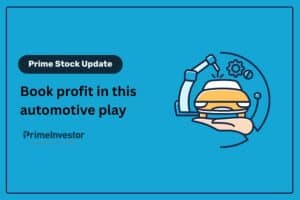With mutual funds, as with stocks, one problem many seasoned investors struggle with is having too many holdings. We all know how it happens. You start out with SIPs in 2-3 basic equity or debt schemes. Over the years, you decide to add new categories of funds or NFOs that take your fancy. You find schemes that you don’t own topping the rankings and buy them, while hanging on to old schemes out of affection.
All this can leave you with a collection of dozens of MFs, which is far in excess of your needs. You should be able to make do with just 4 to 12 funds in your entire mutual fund portfolio to meet all your goals. (Why this number? Read our previous article on how many funds to invest in)

Having dozens of schemes in your mutual fund portfolio can be a dead-weight on your portfolio’s performance on two counts.
- One, when you own a laundry list of MFs, it becomes difficult to spot the laggards that need to be chucked out.
- Two, owning too many funds in your mutual fund portfolio results in over-diversification. Given that even the smallest mutual fund holds at least a dozen stocks or bonds (the bigger ones would hold over 50-60 securities), owning many MFs effectively leaves you with an exposure to a large cross-section of stocks or bonds in the market. When your portfolio mimics the market, you can only hope to make market returns, so its goodbye to any chance of alpha.
This makes a periodic spring-cleaning to consildate your mutual fund portfolio, a very necessary exercise. How do you de-clutter your mutual fund portfolio to shrink the number of schemes from an unwieldy 30 or 40 to a manageable 10 or 12? Here are the steps.
Select your categories
With SEBI’s blessings, every AMC can offer 36 different categories of schemes to investors. Some of these categories, like thematic funds, in turn have dozens of sub-variants. But as a long-term investor, you need not have a finger in all the 36 pies. A very sound mutual fund portfolio can be constructed with just 6-7 fund categories. To arrive at these categories, forget your current portfolio for a moment and go back to the drawing board on your asset allocation.
At PrimeInvestor, apart from equity and debt, we recommend some allocation to gold (5-10%) and US-centric funds (again not more than 10%). For your gold exposure, you can use Sovereign Gold Bonds or Gold ETFs/FoFs. For the US-centric exposure, you can pick a Nasdaq or S&P 500 index fund. Your equity-debt allocation should depend on the horizon for your goals (shorter the horizon, lower the equity allocation) and your ability to stomach losses (lower the ability, lower the equity weight).
Now, your equity exposure can be made up of just 2 or 3 good flexicap funds. Or alternatively, you can choose to mix-and-match large, mid and small-cap funds on your own. Given the difficulties that active funds face in beating indices in the large and mid-cap categories, you can easily take the passive route to getting these exposures. Therefore, one each of a Nifty100 fund and Nifty Midcap150 fund should suffice for your large/midcap fund picks. You can add on an active smallcap fund for a return kicker and your equity mutual fund portfolio is done.
(Use Prime Funds for your fund choices or to make it easier, use the same Prime Funds to build an entire portfolio for your need using our Build your own portfolio tool.
For your debt allocations, you may like to use different categories of debt funds to match goals over different horizons. However, you need not own the entire gamut of debt funds ranging from overnight to long duration. Short term debt funds can do very well for all sub 3-year goals and corporate bond funds can suffice for all your longer term goals. As it would be good to get some diversification in your debt fund holdings, you may need 2 each of short term and corporate bond funds to make up your debt allocations.
Now that you know the 6-7 categories of equity and debt funds that you actually need to own, do take a hard look at your fund portfolio. You can easily identify schemes from categories that are superfluous, and can be exited.
To illustrate, owning hybrid categories such as equity hybrid funds, multi-asset funds, balanced advantage funds, equity savings funds etc may not make sense if you follow your own asset allocation. Thematic equity funds are best gotten rid of if you can’t follow an active exit strategy with them. You won’t need a separate multicap, focused, large-and-midcap or dividend yield fund if you own flexicap funds or large, mid and small-cap funds separately. In debt, you don’t need overnight, liquid, arbitrage, low duration or money market funds if you use bank FDs for emergency money. Dynamic bond funds, medium duration and long duration funds can be dispensed with too.
Short-list for performance
While consolidating your mutual fund portfolio, its important not to cut the flowers and water the weeds. Therefore, having arrived at the 6-7 categories of schemes you’d like to own, you need to conduct an in-depth performance review of the schemes that you hold within these categories. While conducting this review, don’t worry if you don’t own the top-ranking funds in each category. Don’t be too quick to discard funds that don’t top the charts, as long as they have been meeting your return expectations.
It is sufficient if the schemes you own have managed to deliver better-than-average performance relative to their category and benchmark. Make sure not to get carried away by trailing returns or recent records. Use our MF Review Tool to carry out a periodic review to know whether the funds you hold have a buy/hold/sell call from us.
If you like to do your own check use our MF Screener to check various performance metrics as well as portfolio quality. You can create a short-list of schemes that have consistently delivered sub-par performance as possible sell candidates. If that leaves essential categories unrepresented in your portfolio, create a shopping list of good performers to buy, to fill the gaps.
Maintain style diversity
When weeding out underperformers or adding new schemes to your portfolio, you need to be aware of the reasons behind each scheme’s sub-par or outstanding performance. Sometimes, good funds may lag in performance, not because the AMC or fund manager lack skills, but because a particular style of investing is not in vogue in the markets. If your portfolio is made up of homogenous funds mimicking the same style, then you run the risk of long spells of good performance being followed by an equally long spell of mediocre returns.
In the late stages of a bull run, equity funds playing on momentum or quality may deliver bumper returns. When the correction arrives, they may lose big-time. As a new bull phase takes off, stocks or sectors that were out-of-favour and therefore had corrected to bargain valuations may turn out to be the front-runners. Similarly, in the debt market, gilt and long duration funds may deliver poor performance when rates are in a rising cycle. Medium duration or credit risk funds may deliver lucrative yields in a booming economy but deliver nasty shocks when the economy goes downhill.
A majority of equity funds in India are managed in a growth or quality style (What’s that? Read this https://www.primeinvestor.in/6-investment-styles-which-one-suits-you/). In the last three years, momentum funds have been quite popular too. All these styles tend to deliver outperformance in a bull market that has lasted awhile. But these styles can falter when the market corrects sharply and prepares for a new uptrend. In such markets, contrarian or value oriented funds tend to do better.
To smooth out your portfolio performance over market cycles, it therefore pays to have at least one value oriented or contra fund in your equity portfolio as a diversifier. Index funds tend to follow momentum too, so a passive portfolio also needs a value/contra fund as a diversifier.
All Prime Funds will have their style mentioned in the ‘Why this portfolio’ section in the same page.
If you’re not able to identify your fund’s style, use the Portfolio Overlap tool to check if too many of your schemes have common holdings. If the degree of overlap if high (say 50% plus), weed out the scheme with the less impressive performance and add a scheme that combines good performance with a different set of holdings (which indicates a different style of investing).
Avoid AMC/manager concentration
Like sportspersons, AMCs too sometimes enjoy a streak of unusual form and good luck, with all their schemes topping the charts. But this streak may or may not last. While winning streaks tempt investors to load up on their favourite AMC across fund categories, owning multiple schemes from the same AMC can be a bad risk management strategy. The fund manager or CIO responsible for the golden run can quit. The style or approach he or she followed can go out of favour. Or as we saw in the cases of Axis and Franklin Templeton, the troubles of one scheme or one fund manager can cast a cloud over other schemes or the entire AMC.
These risks make it necessary for you to ensure that you don’t own more than one scheme (two at the most) from a single AMC or fund manager within each asset class. For instance, if your equity mutual fund portfolio features Nippon Smallcap, you perhaps avoid Nippon Multicap fund and look to another AMC for a flexicap fund. If you own ICICI Pru Value Discovery, you may want to pick a flexicap fund from another AMC. This applies to an even greater degree to debt funds. If you own HDFC Short Term Debt you may want to skip the AMC’s floating rate fund and look at another AMC instead.
Avoiding concentration in a single AMC reduces the risk to your portfolio from fund manager churn and any governance issues that may crop up.
Keep an eye on tax implications
A last and very important step in any consolidation exercise if to work out the tax implications before you make any buy or sell moves. When you embark on any large-scale decluttering, it will entail selling a chunk of your portfolio. This will mean giving up a part of your hard-won returns to the taxman in the form of capital gains tax. While some tax outgo is inescapable, three strategies may help your save some tax.
One, instead of selling all the schemes you have marked out at one go, phasing out your sells and spreading them over two financial years can help you reduce timing risks and save on tax outgo too. In equity funds for instance, upto Rs 1 lakh of long term capital gains is exempt from tax each year. Therefore, phasing out your sales over two financial years can help shield Rs 2 lakh from the taxman. Phasing out your sales may also make sense if booking all your capital gains at once, would nudge you from a lower tax slab to a higher one in a particular financial year.
Two, you must segregate short-term and long-term holdings before making sell decisions. Equity funds that are on the verge of completing a year should perhaps be held a little longer and sold after the 12 months are completed to avoid short-term capital gains tax. Similarly, with the recent change in debt fund taxation rules, hanging on to schemes that were bought before April 2023 and still have indexation benefits on LTCG may be a good move.
Given a choice between selling a more recent purchase and an older debt fund, you should perhaps go for the former. Three, the set-off provisions in Income Tax allow you to adjust short term capital gains against both short term and long-term capital losses in any financial year, while long term capital gains can be set off only against long term losses. Therefore, before embarking on your mutual fund portfolio consolidation you may like to cut losses on any laggard stocks or funds you’ve been hanging on to, so that your capital gains tax outgo can be lowered through set-off of these losses.







5 thoughts on “Simplify Your Investments: How to Consolidate Your Mutual Fund Portfolio in 5 steps”
Hi Ms. Aarati Krishnan,
If my Indian equity portfolio has around 20% exposure to Parag Parikh Flexi Cap Fund (Value biased), do I need to retain ICICI Pru Value Discovery Fund with 20% exposure? Is my Value style exposure too large? What is ideal ‘Value’ style exposure in a portfolio? If one of them is to be replaced, which one and by what kind of investment style?
(Other exposures – 30% to Nifty 50 index fund + Mirae Asset Large Cap Fund; 30% to Midcap & Smallcap fund)
Regards … Jatin
Parag Parikh is not truly a value fund. It is a growth oriented fund. So retain both and your value exposure will be at 20%
So, should one have 20% in a value fund?
Should we do rebalancing between the value and other styles too, as we do with debt and equity?
why do you suggest 2/3 flexi cap fund in the portfolio? From this category only one fund should be enough or not?
If 2/3 funds are from same category, how will you pick them?
In order to have different styles like growth/value/contra.
Comments are closed.